The Improvement on the Performance of DMD Hadamard Transform Near-Infrared Spectrometer by Double Filter Strategy and a New Hadamard Mask
Abstract
1. Introduction
2. Theory of Hadamard Transform (HT) Spectrometer with Digital Micromirror Device (DMD)
3. The Measurement Result Increase in the Low-Energy Spectral-Band Absorbance
3.1. Impact of Stray Light on the Spectral Band with Different Energies
3.2. Suppression of Stray Light by the Split Waveband Scan Method
4. SNR Improvement of Low Relative-Power Waveband by a New Hadamard Mask
4.1. Impact on SNR of Different Spectral Energies
4.2. Increase in SNR of Low-Energy Waveband by New HT Scan Mask
5. Conclusions
Author Contributions
Funding
Acknowledgments
Conflicts of Interest
References
- Harwit, M.; Sloane, N.J.A. Hadamard Transform Optics, 1st ed.; Academic Press: San Diego, CA, USA, 1979; pp. 1–264. [Google Scholar]
- Hirschfeld, T.; Wyntjes, G. Fourier transform vs. Hadamard transform spectroscopy. Appl. Opt. 1973, 12, 2876–2880. [Google Scholar] [CrossRef] [PubMed]
- Kearney, K.J.; Ninkov, Z. Characterization of a digital micromirror device for use as an optical mask in imaging and spectroscopy. In Proceedings of the SPIE 3292 on Spatial Light Modulators, San Jose, CA, USA, 20 April 1998; pp. 81–92. [Google Scholar]
- Wang, X.-D.; Liu, H.; Lu, Z.-W.; Song, L.-W.; Wang, T.-S.; Dang, B.-S.; Quan, X.-Q.; Li, Y.-P. Design of a spectrum-folded Hadamard transform spectrometer in near-infrared band. Opt. Commun. 2014, 333, 80–83. [Google Scholar] [CrossRef]
- Wang, X.; Liu, H.; Juschkin, L.; Li, Y.; Xu, J.; Quan, X.; Lu, Z. Freeform lens collimating spectrum-folded Hadamard transform near-infrared spectrometer. Opt. Commun. 2016, 380, 161–167. [Google Scholar] [CrossRef]
- Zhang, W.; Zhang, Z.; Gao, L. Study of using complementary S matrix to enhance SNR in Hadamard spectrometer. Optik 2014, 25, 1124–1127. [Google Scholar] [CrossRef]
- Quan, X.; Liu, H.; Lu, Z.; Chen, X.; Wang, X.; Xu, J.; Gao, Q. Correction and analysis of noise in Hadamard transform spectrometer with digital micro-mirror device and double sub-gratings. Opt. Commun. 2016, 359, 95–101. [Google Scholar] [CrossRef]
- Xu, J.; Liu, H.; Lin, C.; Sun, Q. SNR analysis and Hadamard mask modification of DMD Hadamard transform near-infrared spectrometer. Opt. Commun. 2017, 383, 250–254. [Google Scholar] [CrossRef]
- Texas Instruments, DMD@ Spectrometer Design Considerations. Available online: http://www.ti.com.cn/cn/lit/an/dlpa049/dlpa049.pdf (accessed on 1 August 2014).
- Wang, Y.; Liu, H.; Li, J.H.; Lu, Z.F.; Xu, J.L.; Chen, B. Research on near-infrared spectrometer based on DMD. Infrared and laser engineering. (accepted).
- Zong, Y.; Brown, S.W.; Johnson, B.C.; Lykke, K.R.; Ohno, Y. Correction of stray light in spectrographs: Implications for remote sensing. In Proceedings of the SPIE 5882 on Earth Observing Systems X, San Diego, CA, USA, 22 August 2005; pp. 588201–588208. [Google Scholar]
- Wuttig, A.; Riesenberg, R. Sensitive Hadamard transform imaging spectrometer with a simple MEMS. In Proceedings of the SPIE 4881 on Sensors, Systems, and Next-Generation Satellites VI, Crete, Greece, 8 April 2003; pp. 167–178. [Google Scholar]
- Nitzsche, G.; Riesenberg, R. Noise, fluctuation, and Hadamard-transform spectrometry. In Proceedings of the SPIE 5111 on Fluctuations and Noise in Photonics and Quantum Optics, Santa Fe, NM, USA, 16 May 2003; pp. 273–282. [Google Scholar]
- Ye, M.; Ye, H.N.; Yang, X.; Wang, H.; Wang, R. The limited source in Hadamard transform optics. In Proceedings of the SPIE 7130 on Precision Mechanical Measurements, Anhui, China, 31 December 2008; p. 71303X. [Google Scholar]
- Mende, S.B.; Claflin, E.S.; Rairden, R.L.; Swenson, G.R. Hadamard spectroscopy with a two-dimensional detecting array. Appl. Opt. 1993, 32, 7095–7105. [Google Scholar] [CrossRef] [PubMed]
- Xiang, D.; Arnold, M.A. Solid-state digital micro-mirror array spectrometer for Hadamard transform measurements of glucose and lactate in aqueous solutions. Appl. Spectrosc. 2011, 65, 1170–1180. [Google Scholar] [CrossRef] [PubMed]
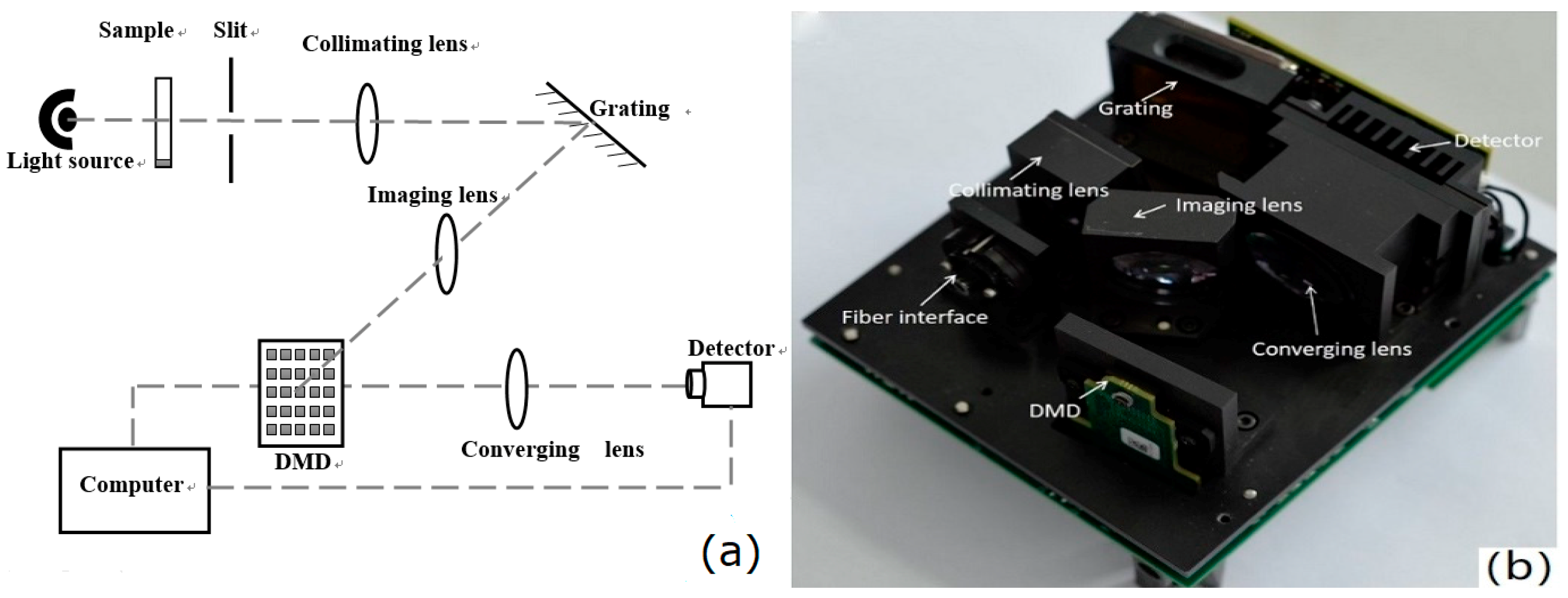
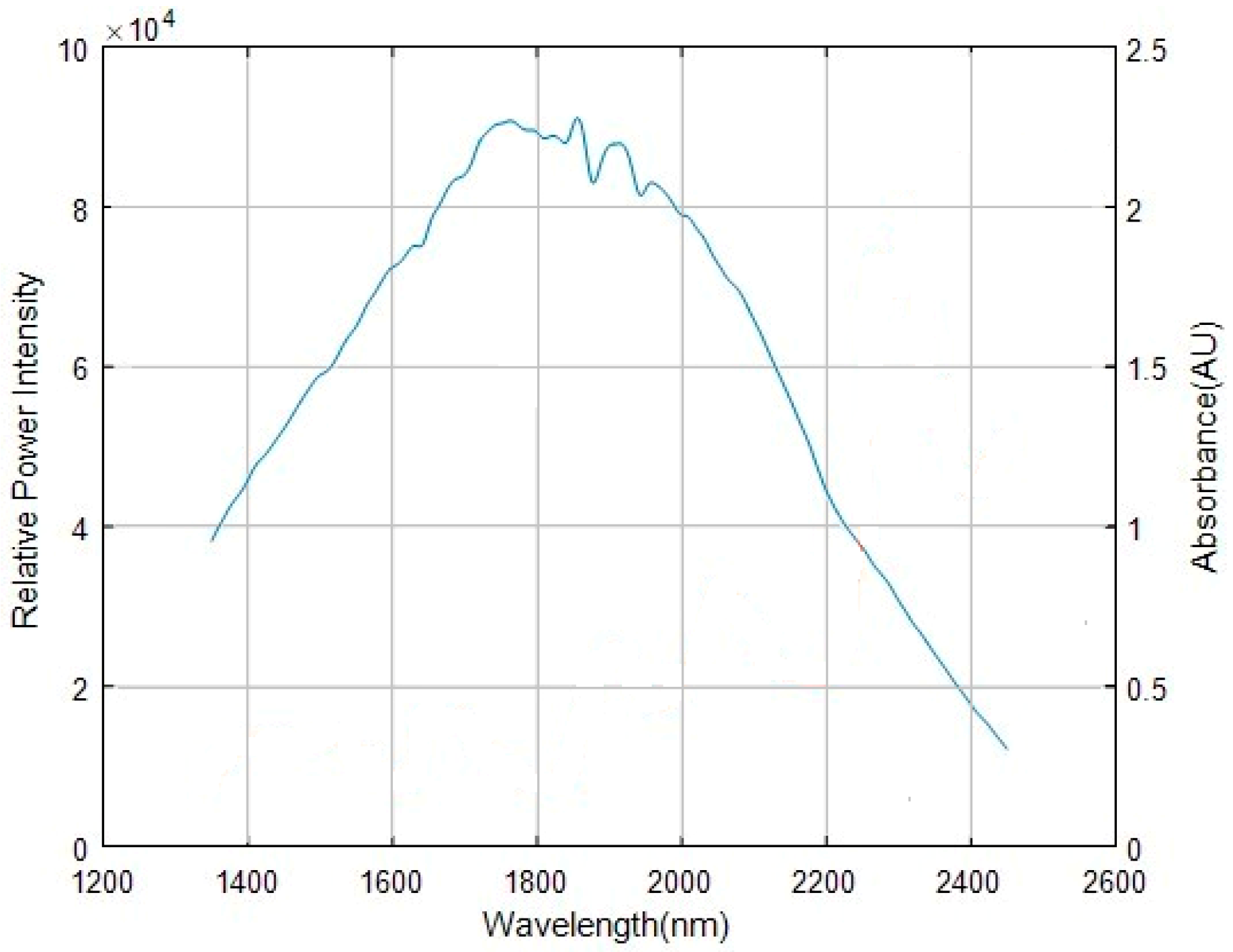
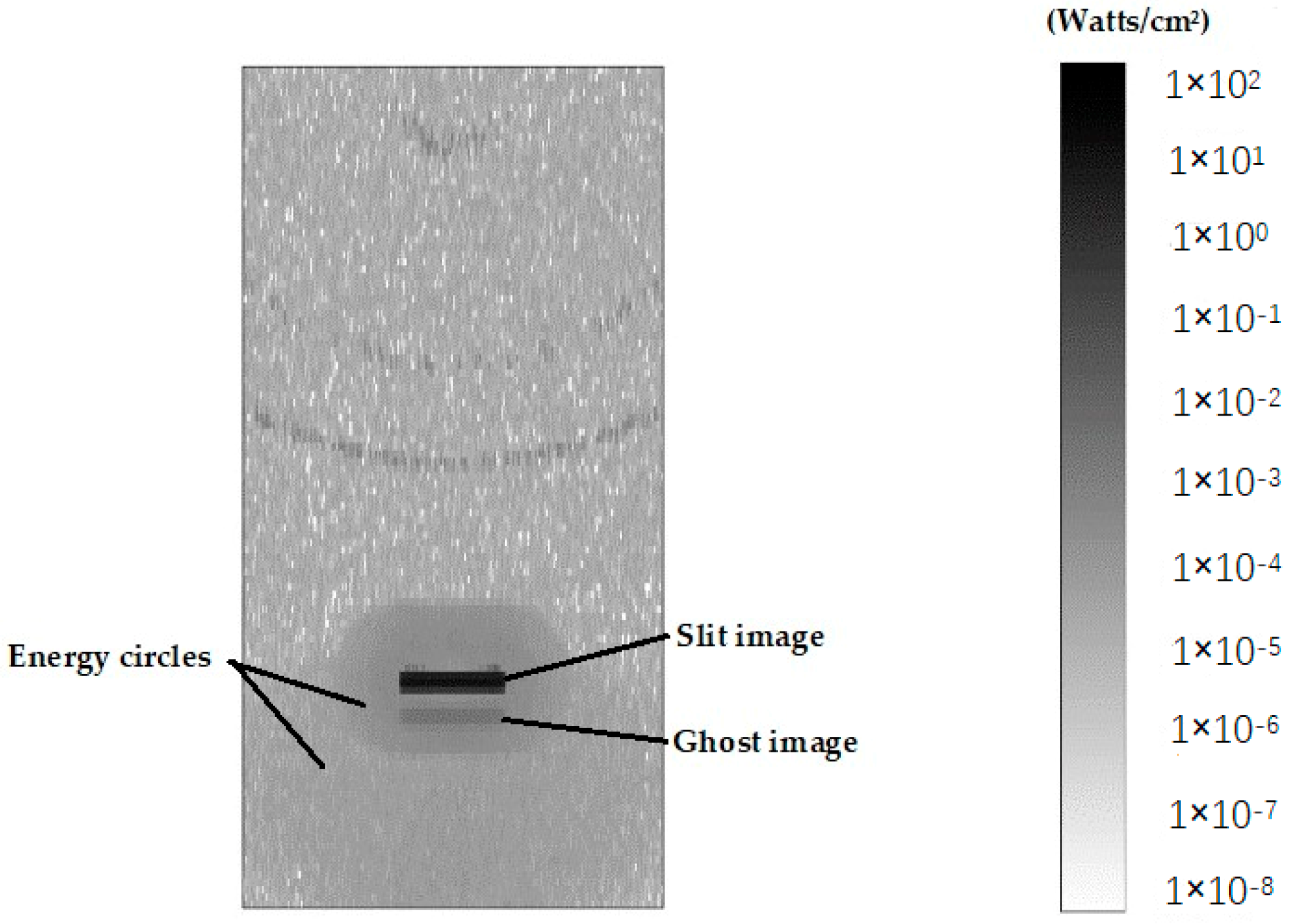
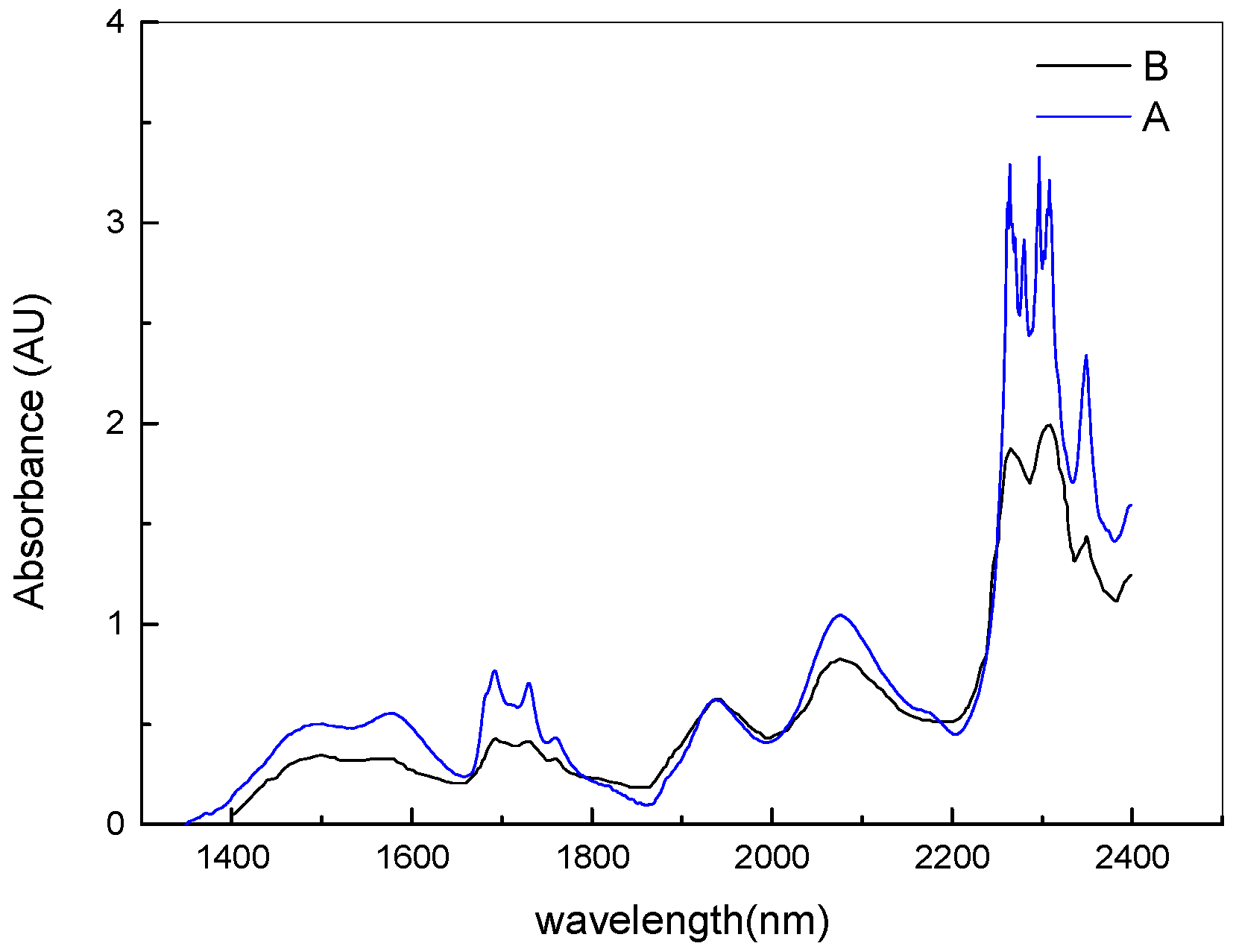
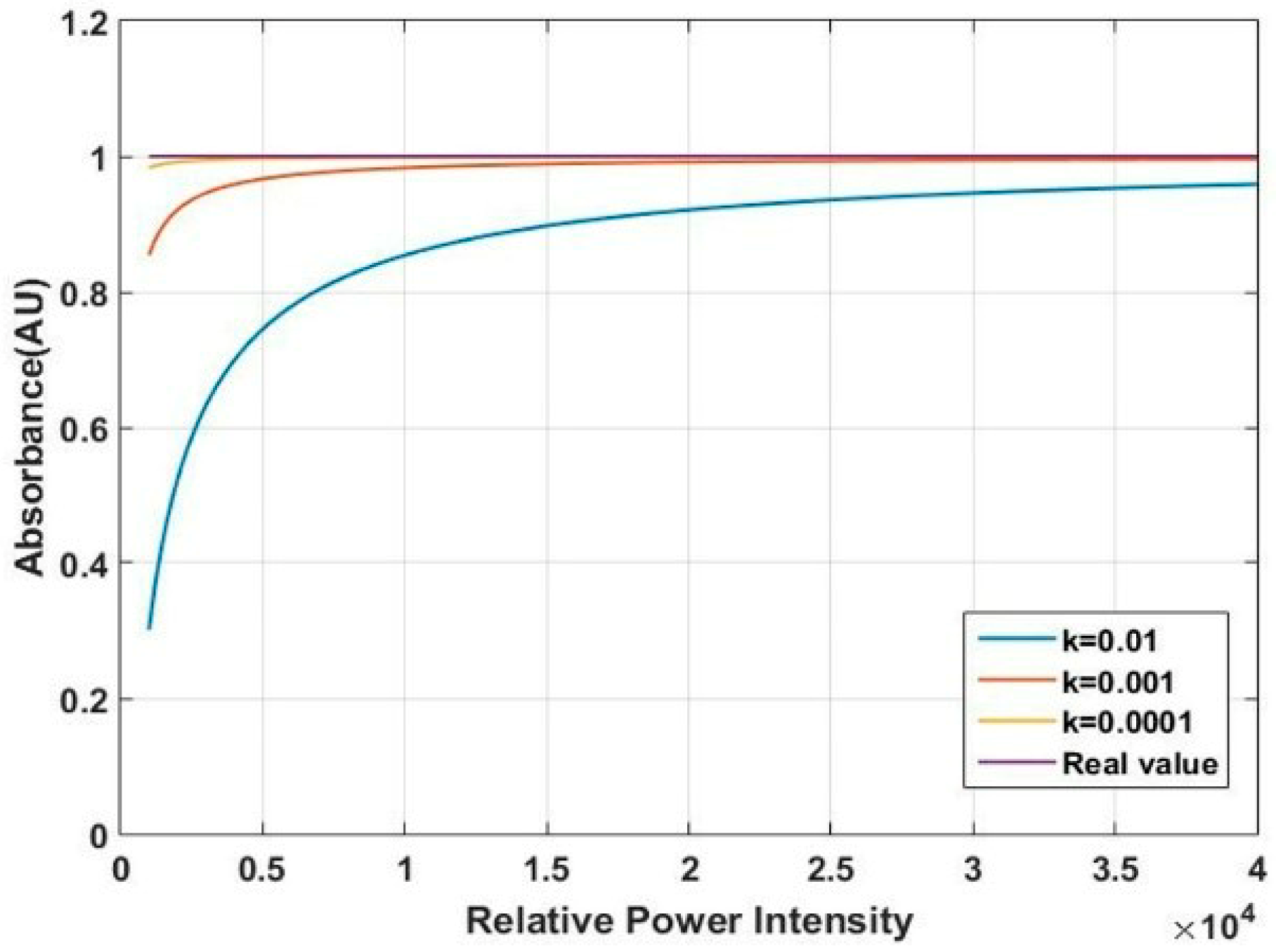
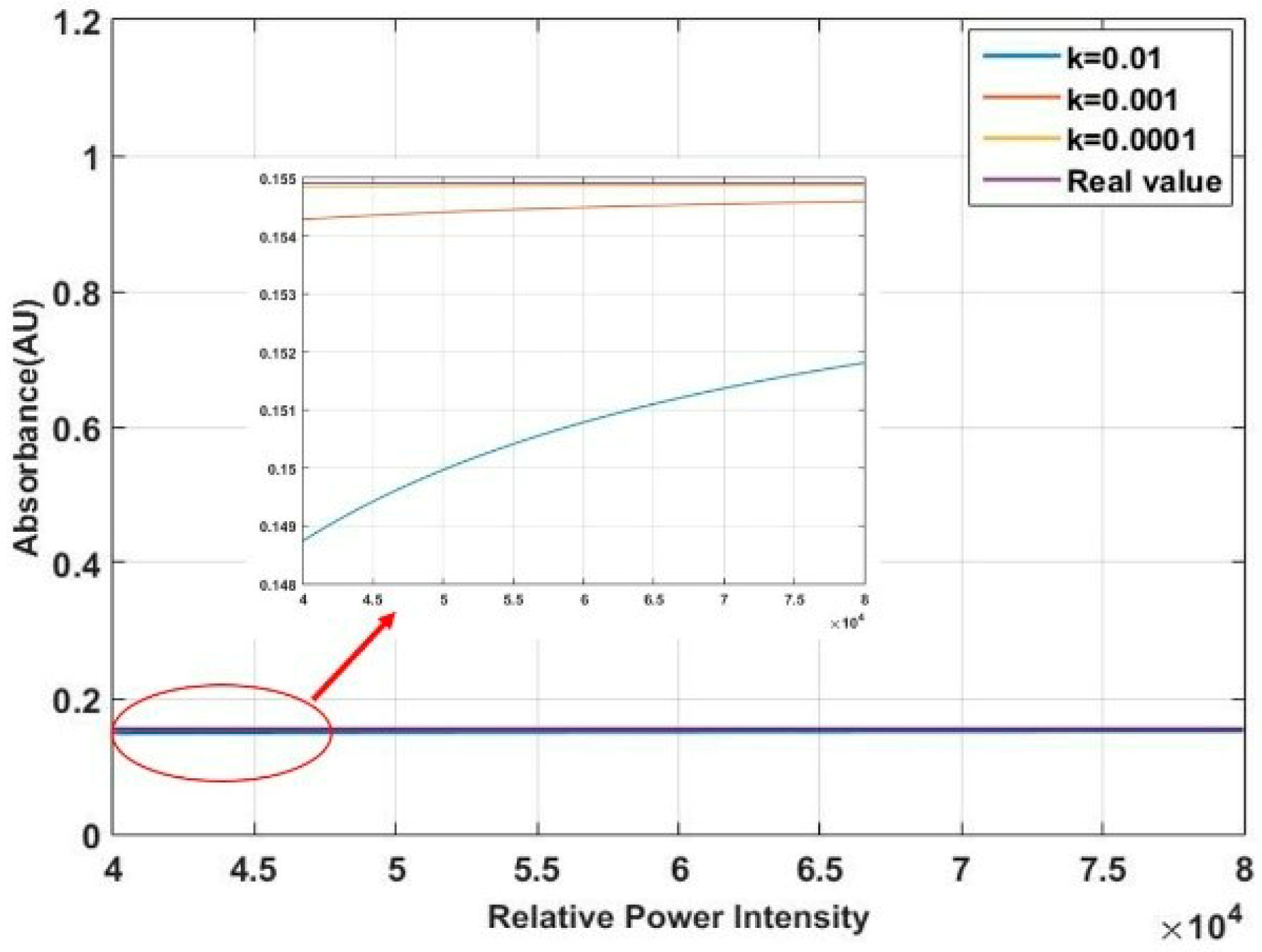
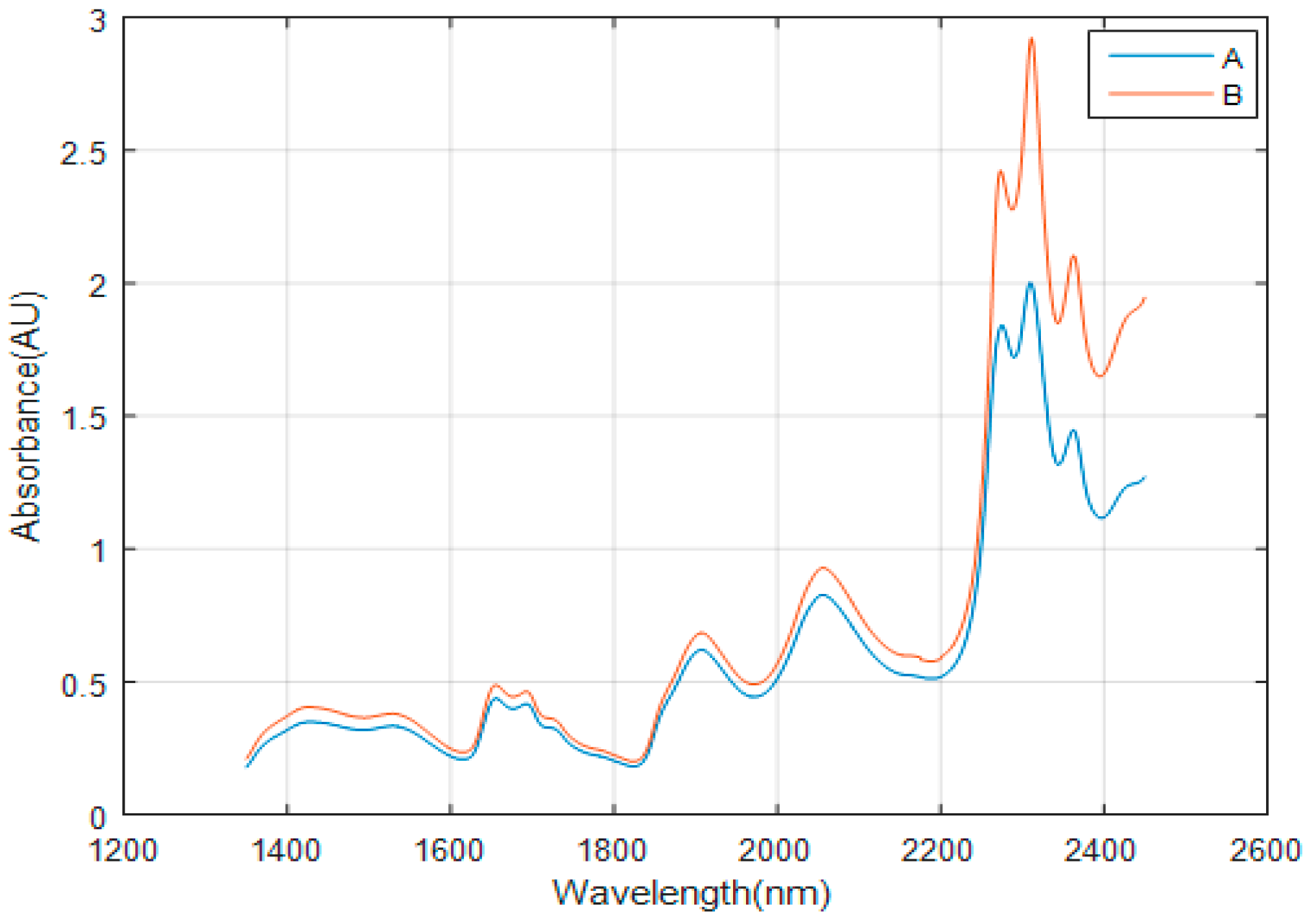
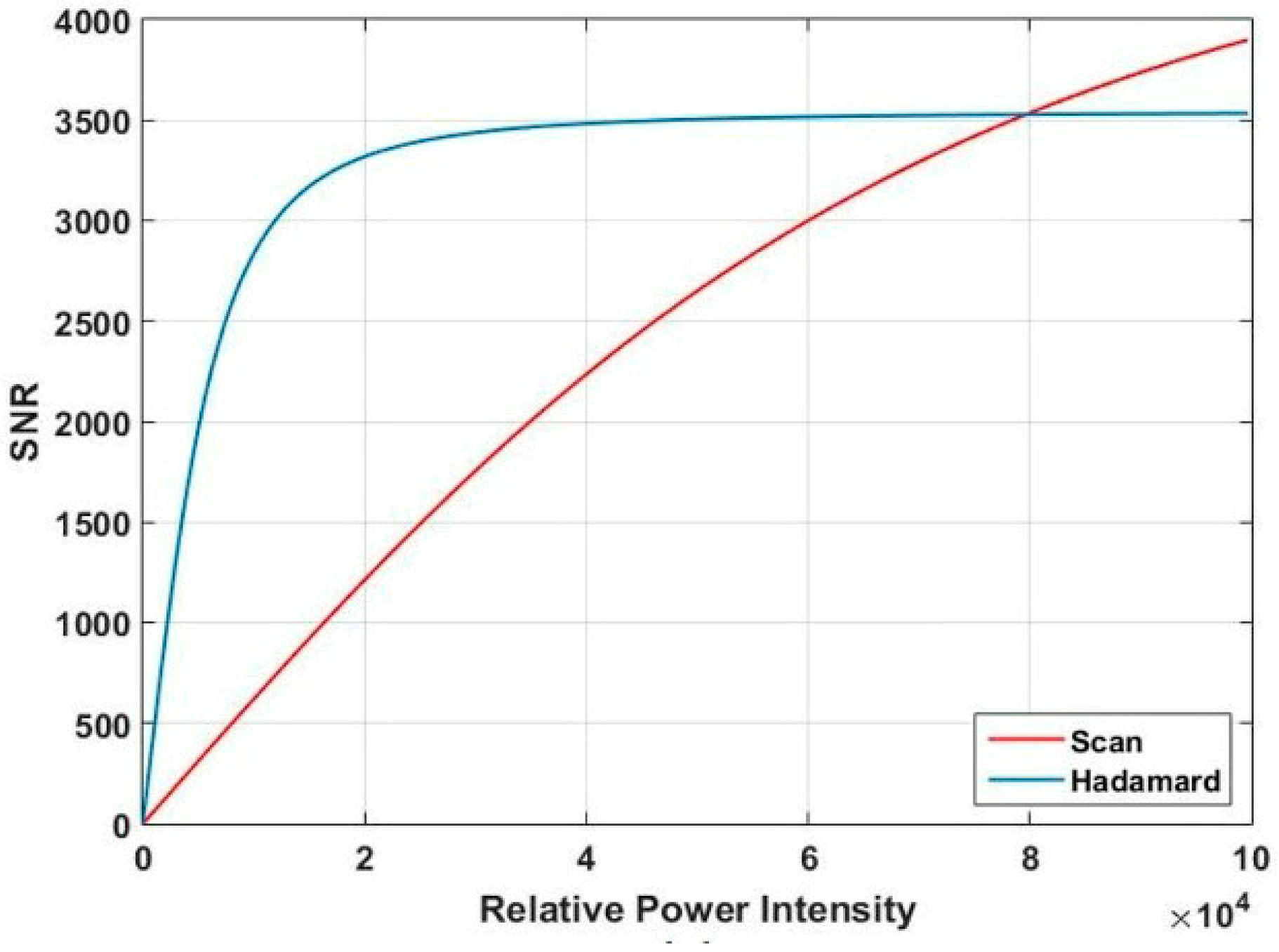
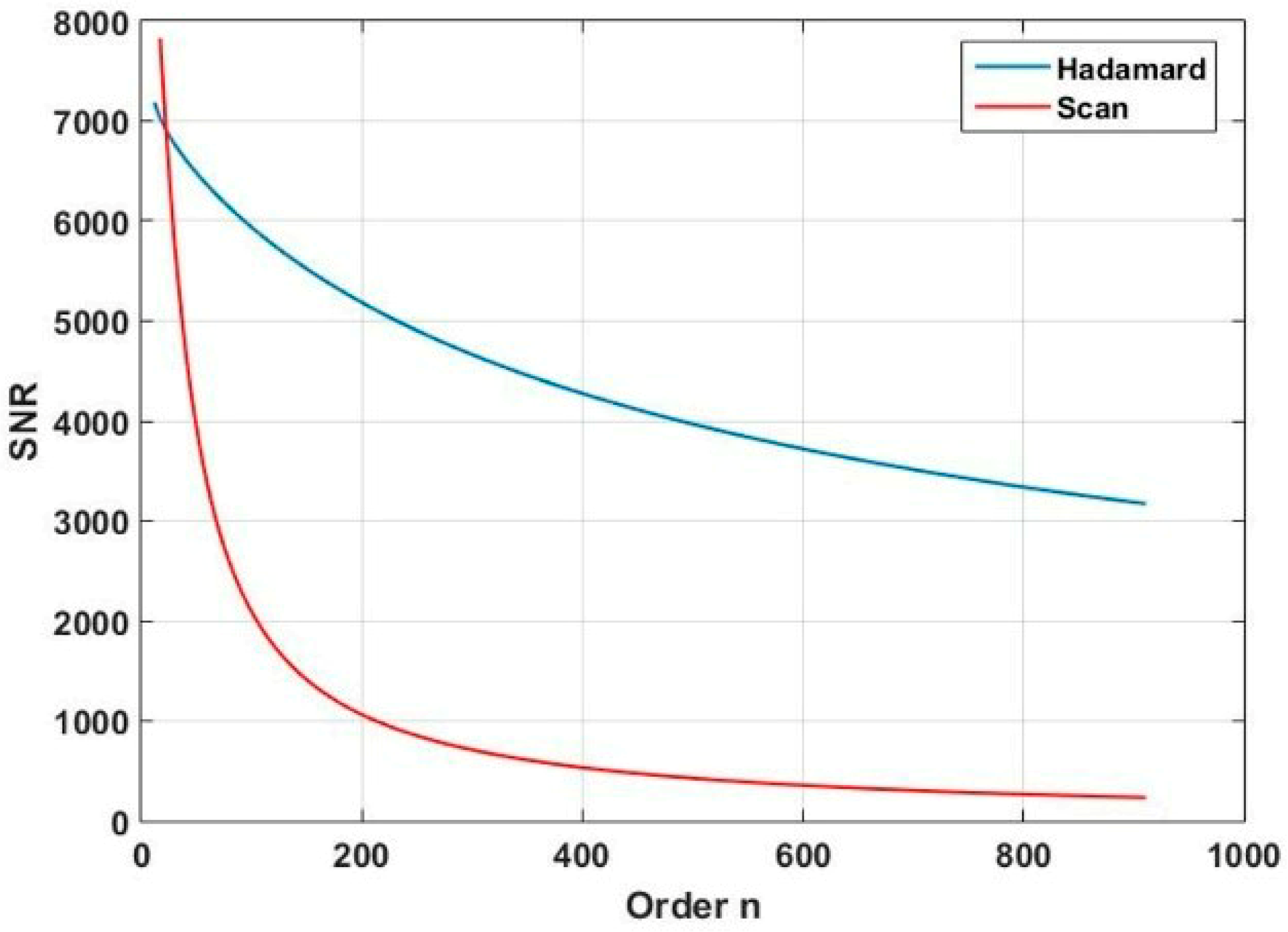
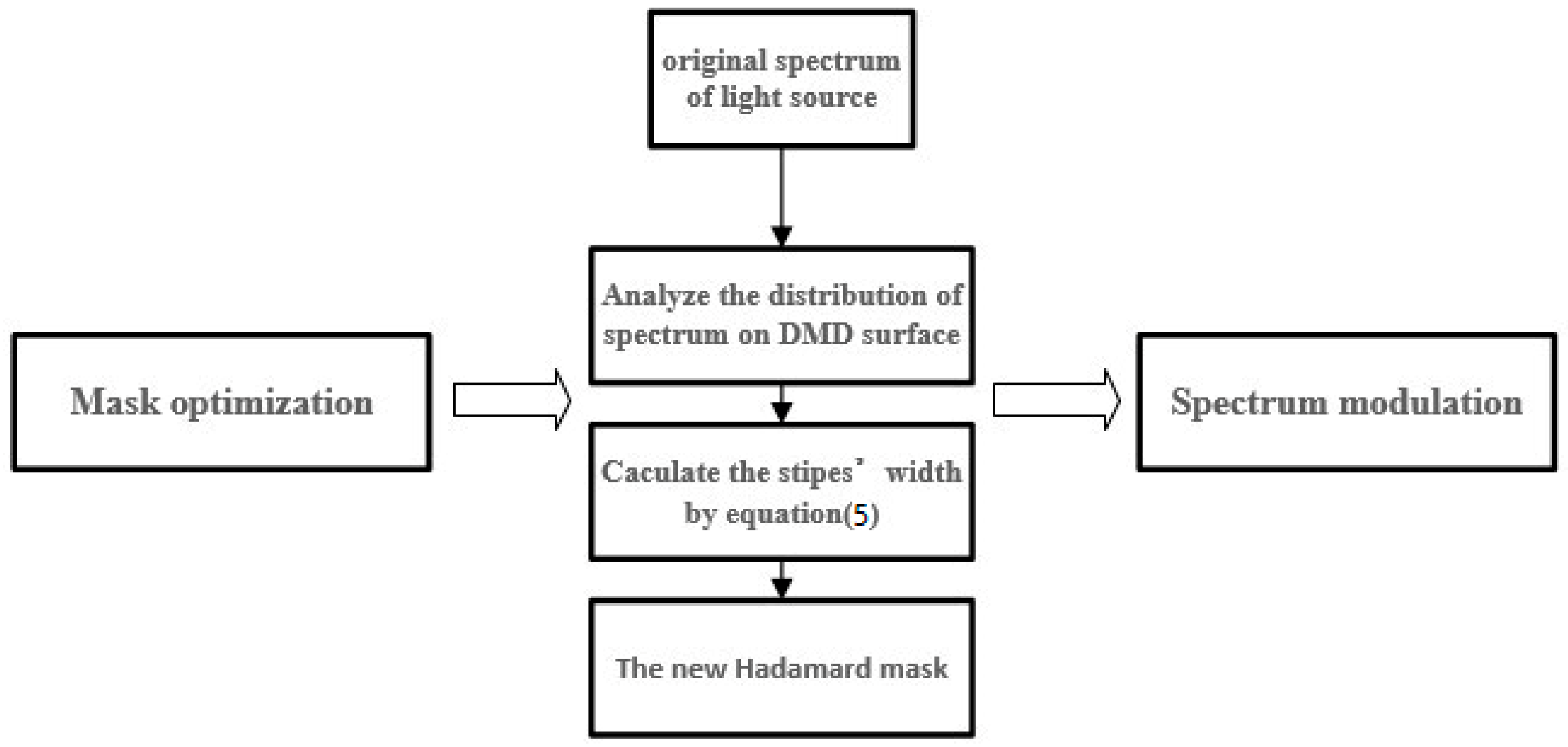

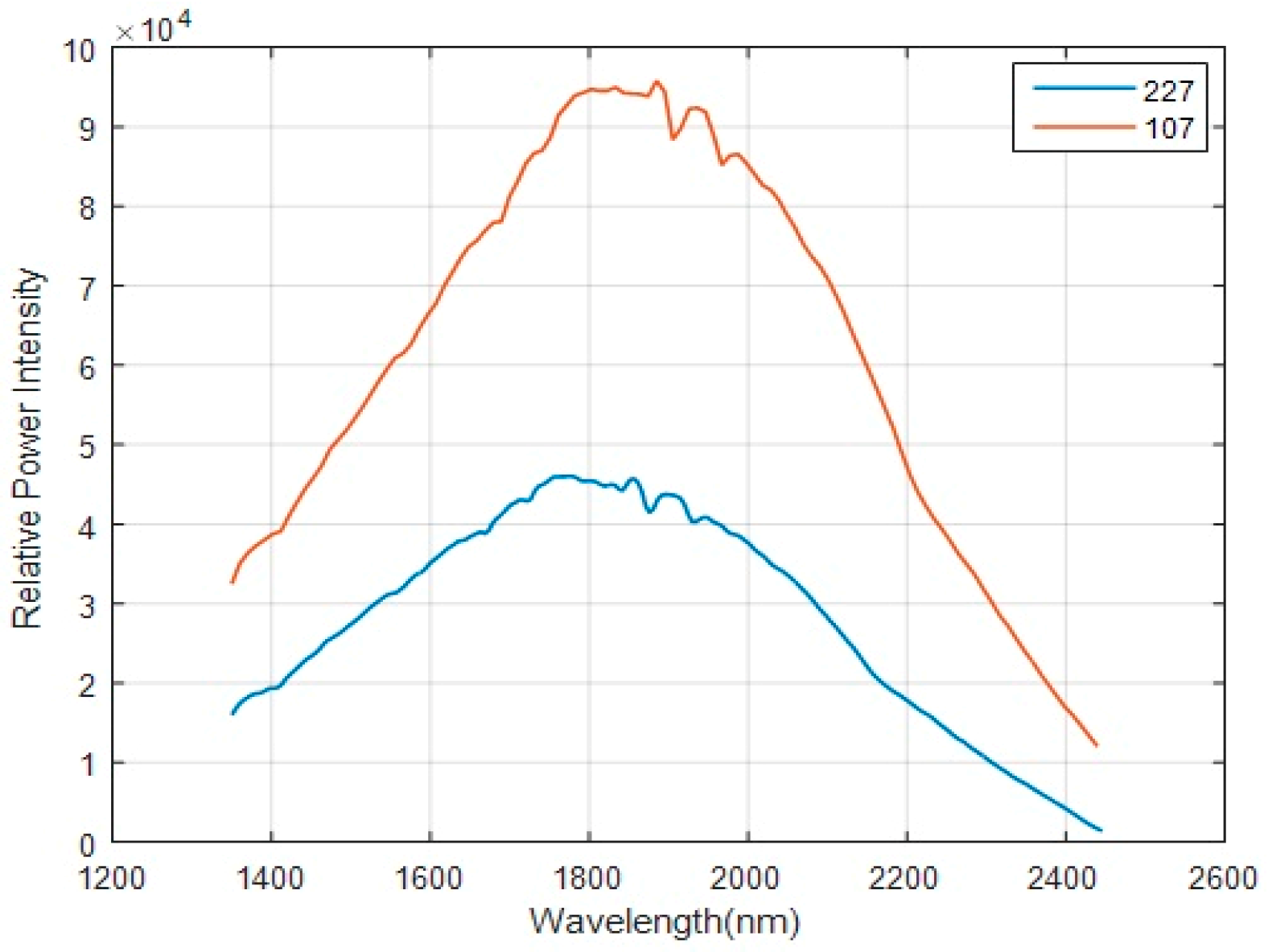

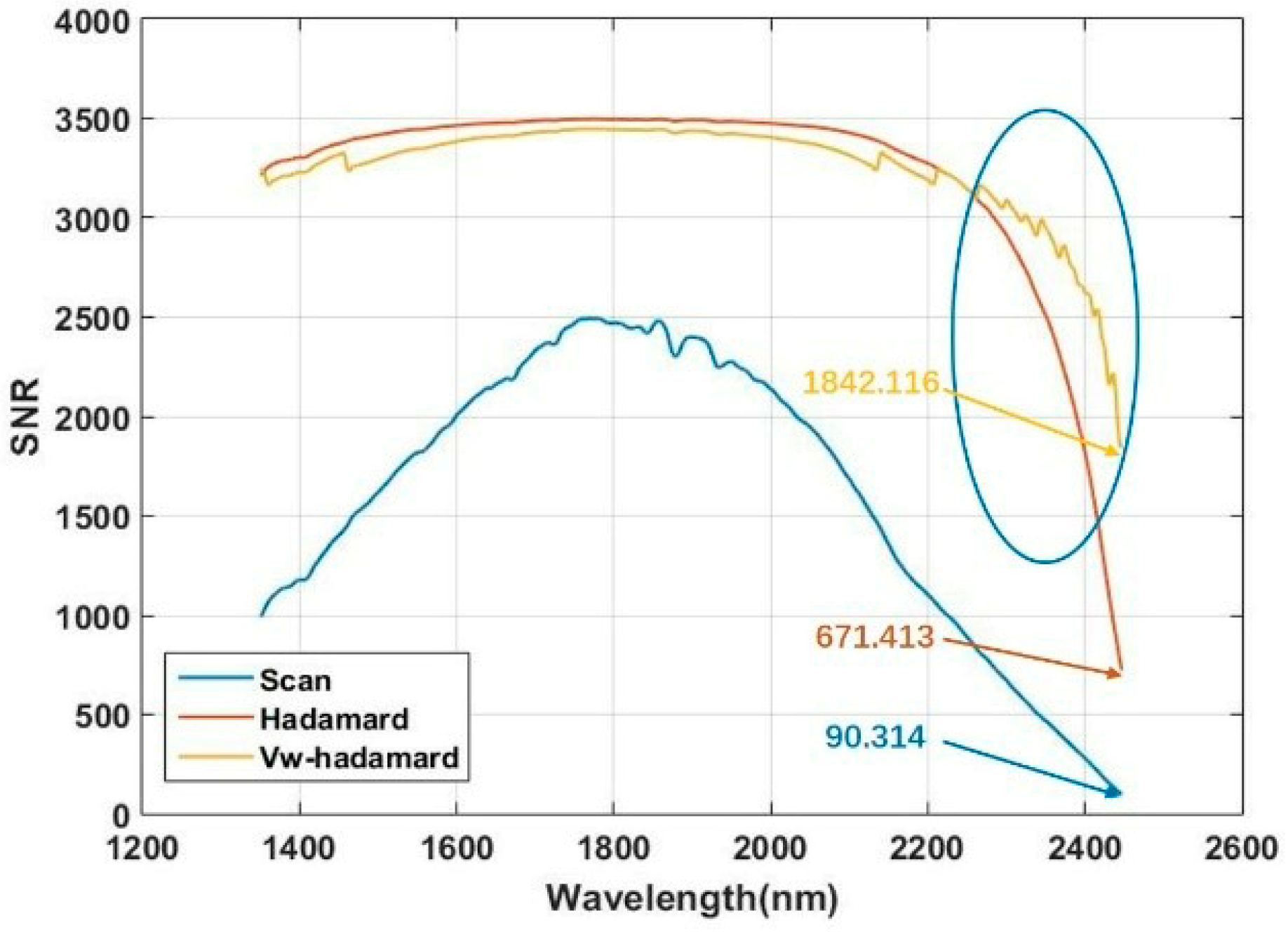

| Components | Model/Parameters | Technical Indexes | Parameters |
|---|---|---|---|
| Light source | Tungsten lamp | Spectral range | 1350–2450 nm |
| Slit | 50 µm | Spectral resolution | ≤ 8 nm |
| Grating | 200 lines/mm | DMD resolution | 912 × 1140 |
| DMD | DLP4500NIR | Sampling rate | 1 s |
| DMD mirrors | Aluminum micromirror | - | - |
| Optical fibers | Infrared quartz | - | - |
| Detector | InGaAs R = 3 mm | - | - |
© 2019 by the authors. Licensee MDPI, Basel, Switzerland. This article is an open access article distributed under the terms and conditions of the Creative Commons Attribution (CC BY) license (http://creativecommons.org/licenses/by/4.0/).
Share and Cite
Lu, Z.; Zhang, J.; Liu, H.; Xu, J.; Li, J. The Improvement on the Performance of DMD Hadamard Transform Near-Infrared Spectrometer by Double Filter Strategy and a New Hadamard Mask. Micromachines 2019, 10, 149. https://doi.org/10.3390/mi10020149
Lu Z, Zhang J, Liu H, Xu J, Li J. The Improvement on the Performance of DMD Hadamard Transform Near-Infrared Spectrometer by Double Filter Strategy and a New Hadamard Mask. Micromachines. 2019; 10(2):149. https://doi.org/10.3390/mi10020149
Chicago/Turabian StyleLu, Zifeng, Jinghang Zhang, Hua Liu, Jialin Xu, and Jinhuan Li. 2019. "The Improvement on the Performance of DMD Hadamard Transform Near-Infrared Spectrometer by Double Filter Strategy and a New Hadamard Mask" Micromachines 10, no. 2: 149. https://doi.org/10.3390/mi10020149
APA StyleLu, Z., Zhang, J., Liu, H., Xu, J., & Li, J. (2019). The Improvement on the Performance of DMD Hadamard Transform Near-Infrared Spectrometer by Double Filter Strategy and a New Hadamard Mask. Micromachines, 10(2), 149. https://doi.org/10.3390/mi10020149





